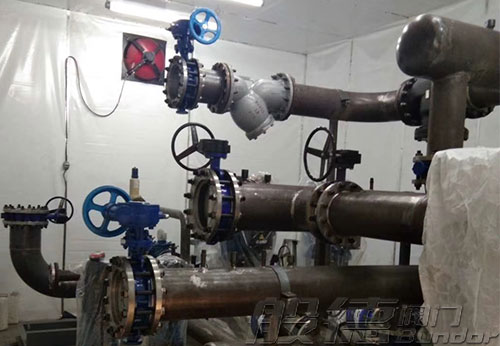
1. Butterfly valve material should meet the sanitary condition in the domestic water supply system. If the valve body is not indicated material and the pressure is less than or equal to 1.6MPa, manufacturer will supply gray cast iron; when the pressure is higher than 1.6MPa, manufacturer will supply carbon steel butterfly valve. If gray cast iron and carbon steel butterfly valve is directly installed on the domestic water supply system without treatment, rust will happen after use. This is not allowed, so the body material should be ductile iron.
If the disc is stainless steel, 304 stainless steel should be used instead of 316 stainless steel. That’s because 316 stainless steel contains titanium, which is not good for human health.
In addition, if the sealing material of the butterfly valve is rubber, nitrile rubber should be selected. If the manufacturer provides other types of rubber, it should be required to provide a report that passes the environmental protection test and meets the drinking water sanitary condition.
2. The butterfly valve on the heating or hot water supply system should pay attention to the sealing material. If the sealing material is not specified when selecting butterfly valve, the sealing material will be nitrile rubber. This rubber is suitable for environment where the working temperature is lower than 80 ℃, it is obviously not suitable to use in the heating system, and the rubber will deteriorate quickly. At this time, EPDM rubber should be used, its maximum working temperature can reach 121 °C. In addition, the heat resistance of silicone rubber and fluorine rubber is also very good, but the price is very expensive.
3. At present, many manufacturers have introduced PTFE as the sealing material of the butterfly valve. This material is resistant to corrosion, wear high temperature, but its disadvantage is that the sealing ring will shrink when it is cold and expand when it is hot. resulting in problems such as leakage of the butterfly valve, loose closing, and difficulty in opening and closing. However, most domestic manufacturers have solved this problem, but some manufacturers have not really solved it, so pay attention to the assessment when selecting butterfly valves.
Fourth, the butterfly valve in the outdoor pipe project should pay attention to the environmental conditions. When flanges are used on both sides of the valve, the strength of the butterfly valve body is weaker than other valve bodies of the same material. The cast iron flange body is relatively weaker.
The valve body has been pulled and cracked due to the influence of thermal expansion when used in outdoor pipe. Therefore, it is recommended that cast iron flange butterfly valve should not be used in outdoor pipe projects. If you want to use cast steel or cast iron wafer butterfly valve, it should not be used in pipeline projects with large temperature difference.










